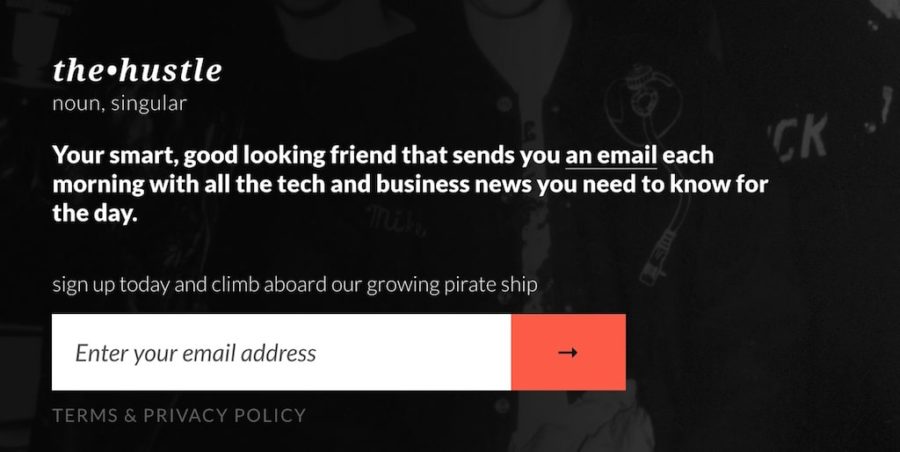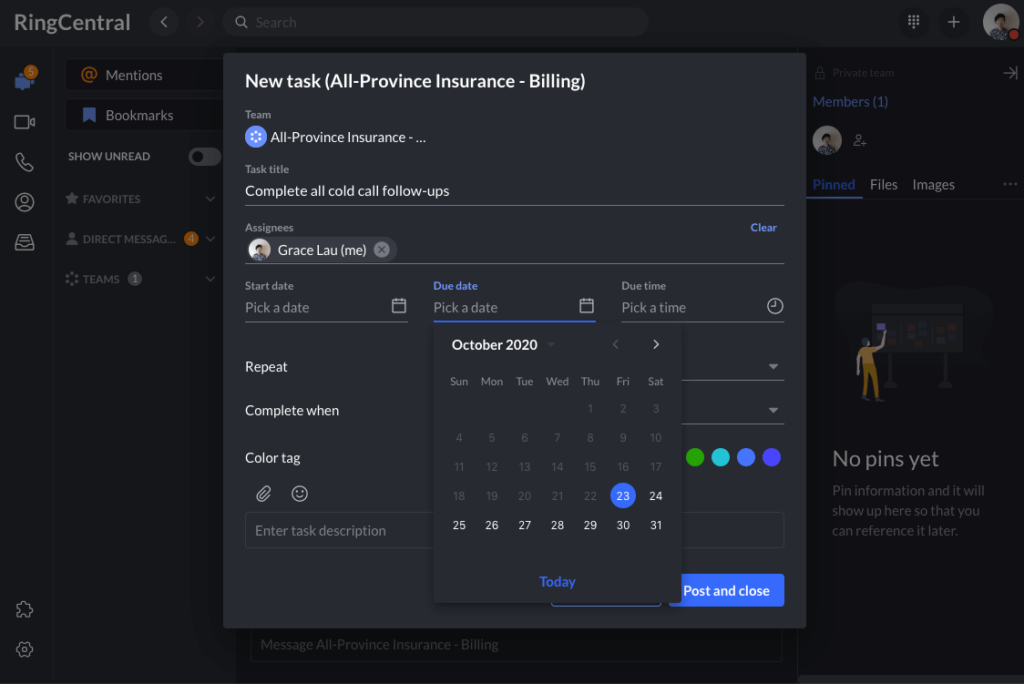Starting a small business is probably one of the most exciting things you can do. Between creating new products and building your team, entrepreneurship is full of unique challenges that feel great to solve.
But the process of finding that solution is anything but easy.
Whether your small business is just getting off the ground or you’ve been running for decades, there are a number of challenges business owners face every day. And just when you find the solution to one problem, another seems to pop up.
Unfortunately, there is no handbook for creating a successful, sustainable business—but that doesn’t mean there aren’t great tips and tricks out there you can apply to your own business. In this post, we’ll share some of the biggest challenges that small businesses face and how you can overcome them:
Keep reading to learn more about these common small business challenges:
- Building brand awareness
- Being accessible to customers
- Connecting with the right leads
- Missing deadlines or due dates
- Protecting customer data
- Hiring the right people
- Only meeting—not exceeding—customer expectations
The 7 most common small business problems—and how to solve them
While not every business owner has dreams of becoming the next Amazon or Apple, growth still tends to be at the forefront of their minds. But even if you’re just trying to build your reputation locally, sustainable growth is a constant uphill battle.
Then there are the many small businesses that focus so much on closing the deal that they forget to invest in the customers they already have. They treat customer support as a second or third priority, which often creates new challenges that make scaling difficult.
Here are some of the biggest small business challenges in both of these areas, and specific ways to overcome them.
1. Building brand awareness
Before you can start growing, your audience needs to know that you exist. You’re not going to become a household name overnight.
But sometimes, trying to build awareness about your brand can feel like shouting into the void. With so many other businesses and brand names out there, getting your target audiences’ attention (and holding it long enough for them to remember you) isn’t easy.
While constantly repeating yourself and blasting your audience with ads is one way to boost recognition, it’s probably not the most efficient. Not only is it expensive, but it can also frustrate your audience if they keep seeing your ads and they’re not interested in your product. And if you don’t have a solid campaign behind your promotion, you might be getting their attention just to lose them if they don’t know how to convert.
How to overcome brand awareness challenges
To build brand awareness, you need to find a memorable (and relevant) way to stand out. Here are a few ideas:
- Run digital ads strategically. “Okay, but you just told me to not blast my audience with ads.” Yes, but used in the right way, digital ads can be a cost-effective way to get your name in front of your customers. Placing advertisements on social media platforms like Facebook and Instagram (or LinkedIn if you’re in a B2B space) or on search platforms like Google can help you meet customers where they already are, and with pay-per-click models, you’re paying for results, not just for ad space like you would be if you put an ad up on, say, a billboard or in a newspaper.
- Learn about social media best practice. We’ve put together an in-depth guide here. Social media is a great way to build brand awareness for free. Just set up an account on a channel that your audience is likely to be on, and from there, you can build a community (don’t forget to use hashtags), post content about your products, and even provide customer service:

- Partner with another brand. Connecting with another brand that shares your audience can help you build trust with the group of people you’re trying to reach. For example, if you sell flowers, you could partner with a bridal shop to help get in front of their existing clients. Here’s how a few brands linked up for Small Business Saturday:

2. Being accessible to customers
Today’s customers have high expectations when it comes to how they receive support. Someone answering the phones from 9 to 5 on weekdays probably isn’t going to cut it.
But for small businesses (and small budgets), it’s hard to have someone available at all hours of the day. However, meeting customer expectations when they need help the most is a crucial challenge to figure out.
How to overcome customer support accessibility challenges
It’s probably not realistic to wait by the phone at all hours of the day. And even if it was, your customers might be reaching out through other ways too, like Facebook and Twitter (and email, and live chat…)
To be accessible to your customers at all times (and in ways they want to connect with you)—without having to pull all-nighters, here are some ideas:
- Expand your support channels. As we already mentioned, customers want to get in touch in the ways they are most comfortable with. Thing is, this can vary from person to person, and they expect you to appeal to all their needs. So, you might want to consider which support channels your customers are using, beyond email and phone.
- Have some kind of contact center solution. Even if you’re a small business, a contact center can help you manage conversations in a range of channels and better monitor the support you’re providing. For example, RingCentral Contact Center™ does exactly that—it streamlines all your customer conversations from Facebook, Instagram, Twitter, and more by putting everything in one place:
- Make the most of analytics. Analytics give you real-time insights into how customers are asking for help and what your team is doing to support them. By keeping an eye on the questions being asked, when they’re being asked, and how you’re able to help, you can improve your customer experience to get the answers they need in front of them at a faster rate. To do this well, you’ll need to track metrics like your average handle time and first call or contact resolution rate:

3. Connecting with the right leads
Lead generation and nurturing are often viewed as a major challenge for small businesses. But while attracting potential new customers is difficult, another big challenge is connecting with the right leads.
In order to grow, your small business needs to get in front of the right people—not just any people that will pay attention.
How to overcome lead generation challenges
To connect with the right leads, you need to start weeding out unfit leads from your funnel from the very beginning. Here are some ideas to make that happen.
- Make your web copy clear. If your website doesn’t clearly explain what you offer and who you offer it to, you might have leads who really aren’t right for your business. For example, if you’re selling luxury bath products but your website copy is super casual and has a cheesy joke or two, you might attract people who aren’t in your target audience. Remember, your brand (which includes everything from your website to how you position your products or services) is also a way to help your potential customers self-select and figure out if you’re right for them!Here’s an example from The Hustle. It’s concise, clear, and tells you exactly what you’re going to get out of this email—with a lot of personality too. Notice how they’re appealing to people who think they’re part of a small, revolutionary group of innovators and cool rule-breakers (“growing pirate ship”) but balance that fun side with very clear, direct copy about what the person is actually receiving (“an email each morning with all the tech and business news you need to know for the day”):

- Use lead scoring. Lead scoring is a system that lets you measure how qualified a lead is based on how they’ve engaged with your brand. Not all leads are the same, and scoring or ranking them will help you see which leads are close to buying or a good fit for your brand, and which ones are just folks casually passing by.)
Pro-tip: Adding a lead scoring strategy to your sales process can help you make sure you’re investing in leads who are more likely to making a purchase, while seeing which leads may need a little nurturing (for example, through email campaigns).
4. Missing deadlines or goals
Missing a deadline might not fall under a traditional “growth” challenge, but if you’re unable to get the day-to-day items done on schedule, you’re delaying your company’s growth. Deadlines or due dates help your business stay on track, even if they’re only implemented internally. And while things can happen to throw you off track, constantly missing due dates or deadlines could be a sign that things just aren’t working for your team.
At the heart of this challenge is more often than not due to a lack of communication. Why? Because when teams don’t communicate with each other (or prospects, or partners, or clients, and so on), that’s when things tend to get missed.
Someone misses an email in their overflowing inbox, and doesn’t realize that today’s actually an important deadline. Or, you’re about to have an intense conversation with a client that should be better as a face-to-face chat, but they’re far away and you can only call them on the phone.
Both of these are examples of why it’s important to have different options for communicating with other people. Is your team equipped with different communication channels?
How to overcome missing deadlines
To solve this productivity challenge, you need to get to the root of why deadlines are being missed. Here are some ideas:
- Have more options for team communication. A lack of communication could be the biggest culprit for not getting things done on time. If your team struggles to get the support or direction they need, they might not be able to get their job done efficiently. To help alleviate this, you could provide more options for getting in touch—for example, RingCentral’s desktop and mobile app gives you team messaging, video conferencing, a business phone service, and more—all in one handy app:
- Implement a task management system. In addition to a lack of communication, a lack of company-wide task management can create confusion about who is doing what. Adding a system that allows everyone to check in on what is expected of them and assign tasks to other people can keep everything moving forward. Again, this is something that’s built into the RingCentral app! You can set deadlines, assign tasks to people, and even color-code them:

- Empower teams to work from anywhere. Being able to work on the go or from home is crucial in today’s world. However, if you don’t have the right tools, team members aren’t able to be productive when they can’t come into the office—potentially pushing projects beyond their due dates. Implementing systems that allow team members to share documents, check in with each other, and provide feedback can keep everything on schedule.
🕹️ Get a hands-on look at how RingCentral works by booking a product tour:
💰 You can also use this calculator to see roughly how much your business could save by using RingCentral to support your team’s communication with each other—and clients.
5. Protecting customer data
Whether you’re storing customer email addresses and names for newsletter mailing lists or you have credit card information saved from previous purchases, you’re responsible for all the customer data they’ve chosen to share with you. If that information falls into the wrong hands, it’s your reputation on the line.
However, many small businesses think data security is only for the big names—leaving them (and their customers) exposed.
How to overcome data security challenges
While you can’t eliminate the threat of a cyber attack entirely, you can implement measures to ensure the data you have on customers is properly protected. Here are some ideas for resolving customer data security challenges.
- Make sure your team is well trained. If certain members of your team have access to customer data, you need to make sure they understand the responsibility and importance of keeping that data safe. Hold special training on handling sensitive information.
- Choose tools with extra layers of protection. Any time you communicate with a customer, you want to be sure the conversation and information they share is private. Using messaging and video conferencing tools that make security a priority can give you additional peace of mind.
6. Hiring the right people
Any time you grow your business, you probably also need to consider expanding your team. A one (or two)-person team can only do so much, and as you get new customers, you need the staff to make sure that your new business is well maintained.
However, growing your team can cause issues if it’s not done right. If you’re not strategic about how you hire, you might find that you don’t have the right personalities on your team or that the new hires aren’t skilled to handle the new challenges that come with new clients. Or, you might wait too long to hire new employees and end up frustrating customers in the meantime.
How to overcome hiring challenges
Hiring will be unique from company to company, but before you start bringing new employees on board, here are some things to consider:
- What gaps exist within my current team? Don’t just hire a carbon copy of the employees already on your team. Instead, look at what gaps exist and what might need to be filled. What skills should new hires have that maybe your current employees don’t?
- Consider if outsourcing or contracting is right for you. Maybe you’re in the midst of a busy season that you don’t think will last longer than a few months. Or, maybe you’re still not quite sure what kind of team members you need to round out your staff. A good way to fill these temporary gaps is through outsourcing or contracting third-party vendors to pick up some of the tasks your existing employees can’t handle.
- Talk to your team. Don’t make hiring decisions without consulting the rest of your team. After all, bringing someone new onboard will probably impact their day-to-day as well. Get a feel for where your team feels like they need additional support and what areas they think could be improved upon. During the hiring process, bring relevant team members into the decision-making process. (And if it’s just you, still try to look at both the pros and cons of hiring this person and be as objective as you can.)
7. Only meeting—not exceeding—customer expectations
Meeting customer expectations is a good start, but really, it’s the minimum of what you want to be delivering customers. While meeting customer expectations isn’t going to hurt your brand reputation, it’s also not going to win you any new business.
Exceeding expectations on the other hand has the power to wow existing customers and encourage them to share their experience with friends and family. When you have customers vouching for the great work you do or service you provide, that’s free marketing. And everyone loves free marketing.
How to overcome expectation challenges
So, how do you dazzle customers? Here are some ideas.
- Adopt a customer-centric approach. Are your customers at the center of everything you do? They should be. With a customer-centric approach, you focus on customer needs above everything else. You create experiences, products, or services that are exactly what customers are looking for and continue to shape your business around the desires and demands of the audience you’re trying to serve.
- Make the most of analytics. We already touched on how great analytics can be for improving customer support. The same applies for improving customer experience. Use the data you gather to better anticipate customer needs so you can deliver better results.
- Get feedback from your customers. If you want to provide a better experience to your audience, why not ask them what they’re looking for? Connecting with your audience to get a feel for where you might be falling short can give you the insight you need to fill in gaps and improve offerings to better meet (and exceed) customer expectations.
Ready to nip these small business challenges in the bud?
So many small businesses challenges can be solved with one thing: better communication. Whether we’re talking about issues with how your team connects with one another or how you provide support to your customers, finding ways to have better, more productive conversations can solve a number of small business challenges.
RingCentral provides opportunities to strengthen communication, share documents and information, and even receive feedback from the people you need to impress the most. By opening those communication pathways and providing everyone with an opportunity to be a part of the conversation, your business challenges will become a thing of the past.
Originally published Nov 19, 2020, updated Jul 24, 2024





